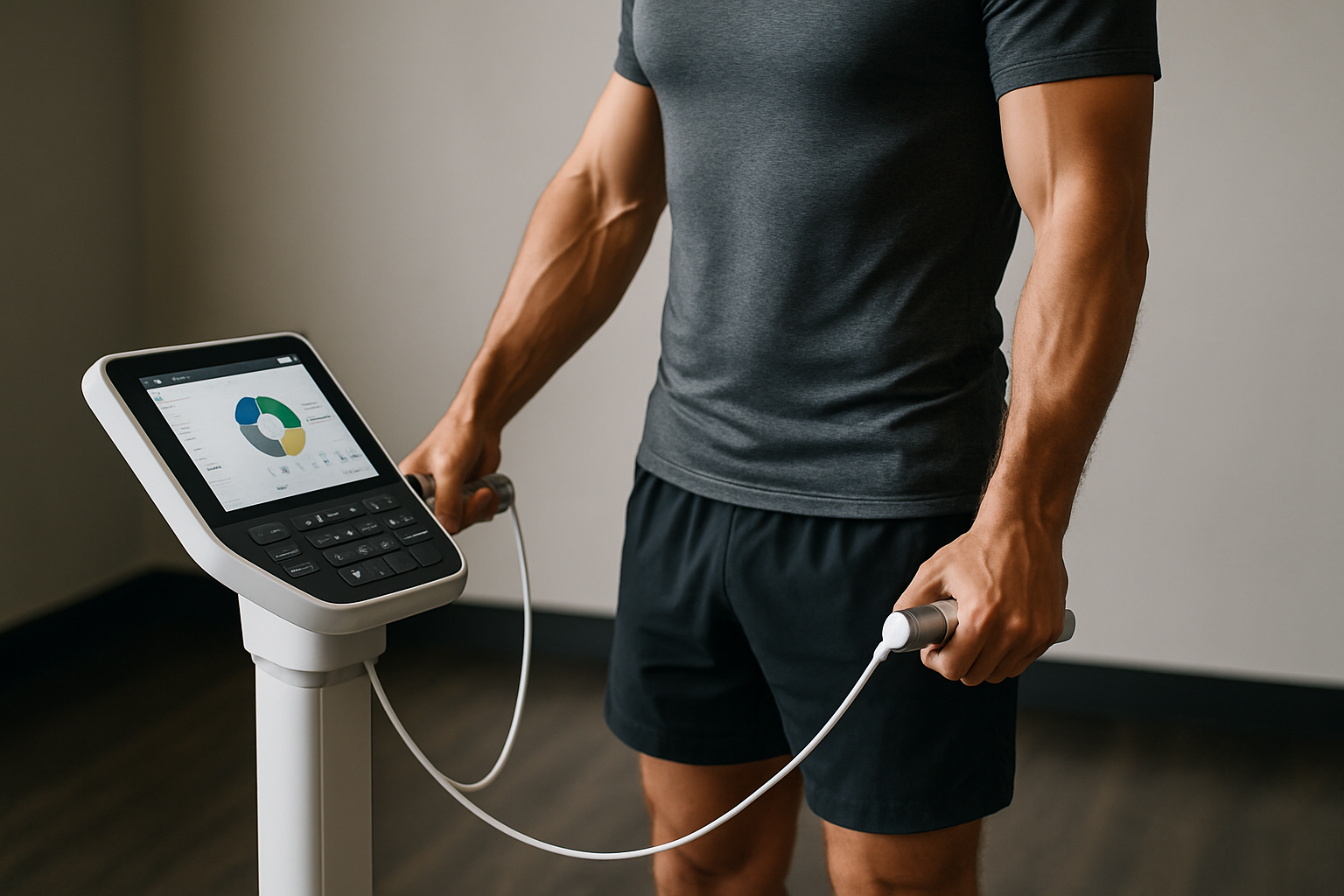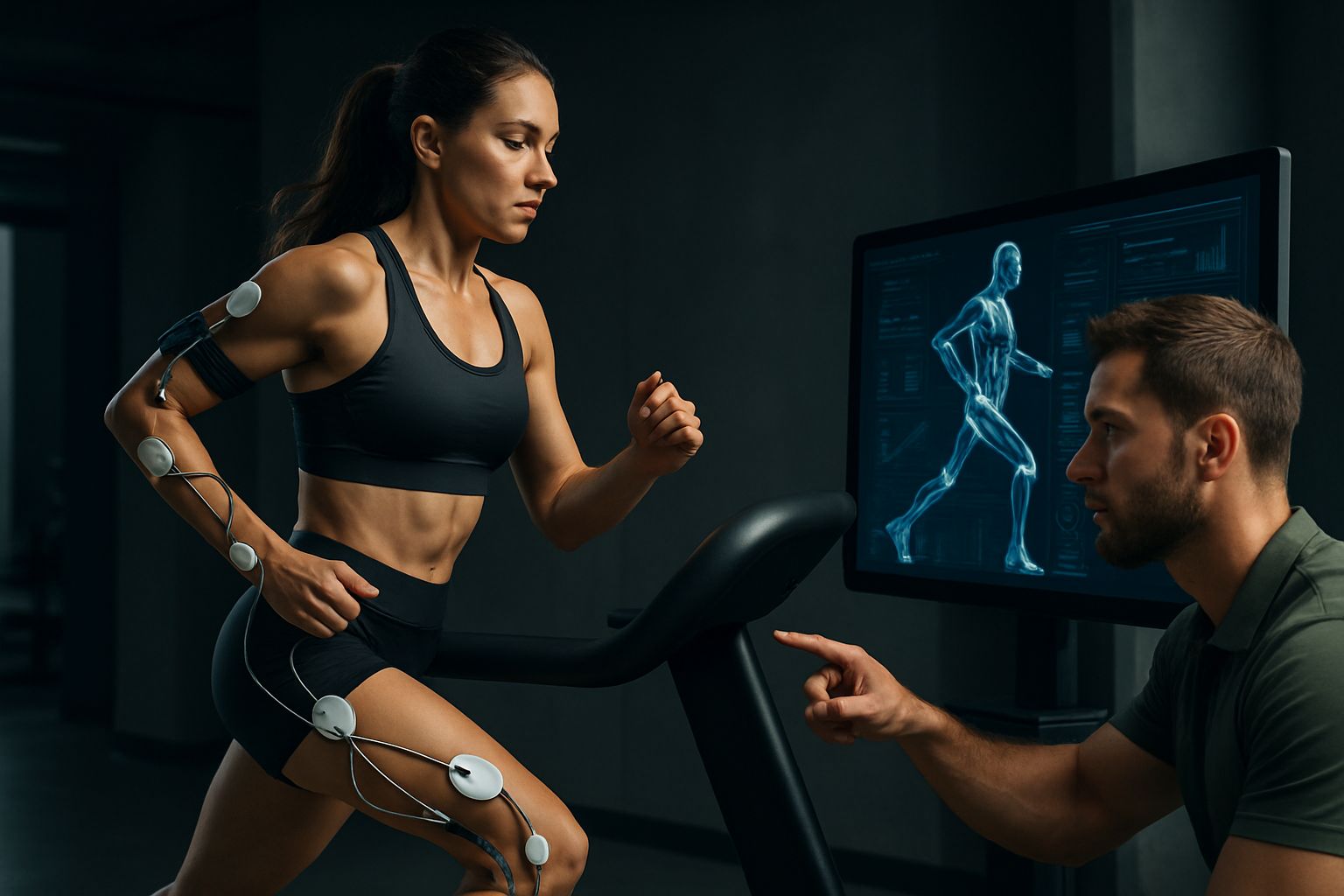Bioelectrical Impedance Analysis: Revolutionizing Body Composition Assessment
Are you curious about what's really going on inside your body? Imagine having a detailed map of your muscle mass, fat distribution, and hydration levels at your fingertips. This isn't science fiction—it's the reality of Bioelectrical Impedance Analysis (BIA), a cutting-edge technology that's changing the way we understand and monitor our health.

The science behind BIA dates back to the 1960s when researchers first began exploring the relationship between electrical conductivity and body water content. However, it wasn’t until the 1980s that BIA devices became commercially available for body composition analysis. Since then, advancements in technology and our understanding of human physiology have dramatically improved the accuracy and capabilities of BIA systems.
The Evolution of Body Composition Analysis
Before the advent of BIA, body composition assessment relied heavily on methods like hydrostatic weighing (underwater weighing) and skinfold measurements. While these techniques provided valuable insights, they were often inconvenient, time-consuming, and subject to significant margins of error. BIA has transformed this landscape, offering a quick, non-invasive, and increasingly accurate alternative.
Modern BIA devices can provide a wealth of information in just a matter of minutes, including:
-
Total body water
-
Intracellular and extracellular water balance
-
Body fat percentage
-
Muscle mass
-
Bone density
-
Visceral fat levels
-
Basal metabolic rate
This comprehensive data allows for a much more nuanced understanding of an individual’s health status, far beyond what a simple weight measurement can provide.
Applications in Health and Fitness
The implications of BIA technology extend across various fields of health and fitness. In clinical settings, BIA is used to monitor patients with conditions such as heart failure, kidney disease, and malnutrition. By tracking changes in fluid balance and body composition, healthcare providers can make more informed decisions about treatment plans and nutritional interventions.
In the fitness industry, BIA has become an invaluable tool for personal trainers and athletes. By providing detailed insights into muscle mass and fat distribution, BIA enables the creation of highly personalized training and nutrition programs. Athletes can use BIA to optimize their body composition for peak performance, while individuals on weight loss journeys can track their progress more accurately, ensuring they’re losing fat rather than muscle mass.
Overcoming Limitations and Maximizing Accuracy
While BIA offers numerous advantages, it’s important to acknowledge its limitations. Factors such as hydration status, recent food intake, and exercise can influence BIA readings. To maximize accuracy, it’s crucial to follow consistent testing protocols, such as measuring at the same time of day and under similar conditions.
Recent advancements have addressed many of these concerns. Multi-frequency BIA devices, for instance, use multiple electrical frequencies to provide more accurate assessments across different tissue types. Some cutting-edge systems even incorporate artificial intelligence to enhance data interpretation and account for individual variability.
The Future of Personalized Health Monitoring
As BIA technology continues to evolve, we’re seeing a shift towards more accessible and user-friendly devices. Home BIA scales are becoming increasingly sophisticated, offering consumers the ability to track their body composition over time without the need for professional assessments.
Looking ahead, the integration of BIA data with other health metrics, such as heart rate variability and sleep patterns, promises to provide an even more comprehensive picture of overall health. This holistic approach to health monitoring could revolutionize preventive care, allowing individuals to detect and address potential health issues before they become serious problems.
Maximizing Your BIA Experience
-
Stay consistently hydrated before measurements
-
Avoid eating or exercising 2-3 hours prior to testing
-
Measure at the same time of day for consistent results
-
Use the bathroom before your BIA assessment
-
Remove all metal objects and electronic devices
-
Stand barefoot on the BIA device for optimal contact
-
Consider professional BIA assessments for the most accurate results
-
Track trends over time rather than focusing on single measurements
Bioelectrical Impedance Analysis represents a significant leap forward in our ability to understand and monitor body composition. By providing detailed, actionable insights into our health, BIA empowers individuals to make more informed decisions about their diet, exercise, and overall wellness. As this technology continues to advance and become more accessible, it has the potential to transform how we approach personal health management, ushering in a new era of proactive, personalized wellness strategies.





